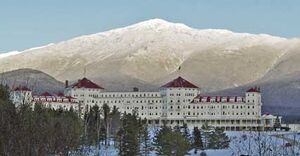Teutonic Knights
The Teutonic Knights was a Merrie Olde Bande of German crusaders organized in the 1100s to go to the Holy Land and get in the faces of the Muslims.
They took their name from "Teuton," a name sometimes used for the Germanic people, such as Tommy Teutone. The Romans called them Teutoni, as they had trouble with words like "Kraut."
The Teutonic Knights were modeled after earlier organizations, such as the Knights Templar, Knights Hospitaller, and Knights Soda-jerk. They shared secret handshakes and elected Grand Pooh-bahs from among their members.
Unfortunately, the Holy Land thing did not work out for the Teutonic Knights; and in the 1200s, they shifted their emphasis toward the simpler task of taking over the Baltics, as modern players still do when they get to Park Place and Boardwalk only to find them occupied.
During the Third Reich, the northeastern campaign of Adolf Hitler had the inspiring phrase, "Ve vill be like der Teutonic Knights (except that we won't fall on our faces, convert to a social club, and deny we were out for foreign plunder in the first place)."
History
The original goal of the Teutonic Knights was indeed not to get in the faces of the Muslims but merely to give "aid and succor" to Christians traveling to the Holy Lands to do so. The group took shape from the predecessor Knights Tolltakers, being the pioneers in making change while wearing rubber gloves and chatting with the kid in the adjacent booth.
However, when Christians were defeated in the Middle East, the group moved to the southern defense of Transylvania in 1211. It renamed itself the Order of Brothers of the German House of Saint Mary in Jerusalem, a name it quickly became necessary to shorten to Motel 6. Like its latter-day namesake, this group prided itself on renting a night's lodging for six of the local coin and, when the industry's economics changed, explaining to the customer why the name said 6 when the price was really 15. The fights went well, but after they suddenly pledged allegiance to the Pope, the King of Hungary kicked them out.
In 1230, the Knights again began to feel their wild oats and marched toward Poland, mere footsteps behind the Golden Bull of Rimini, phew! With local planning approval, they set up the Monastic State of the Teutonic Knights and took control of Livonia, which remains the most lily-white suburb of Detroit, which is saying a lot. They then tried to expand — looking for a bit of 'lebensraum' — but suffered their first big punch on the German hooter from Russian Grand Duke Alexander Nevsky.
When Lithuania became Christian, the Knights lost their main purpose in Europe (yet again), and took to starting random fights, just to keep their hand in. They found one at the Battle of Grunwald in 1410 against the Poles. Winner: Poles. Fifty years later, granted a re-match on a battlefield and with referees of their own choosing, the Knights got pwned again and saw fit to accept Polish lordship in their remaining territories.
Such Knights as remained ran East Prussia until Grand Master Albert of Brandenburg-Ansbach went Protestant and commandeered the land, renting it off the Polish Kings. The Knights had now been run off after one switch to Catholicism and after one switch away from it. It was becoming clear that, whatever the sceptre, the Knights were going to get its short end.
The next half-millennium would see the Knights continually suffer military defeats, lose their resorts, golf courses, and other leisure properties, and lose the rest of their raison d'être. Adolf Hitler put the complete kibosh on them in 1935. They resurfaced, but merely as a veterans' club where old warriors could go to remind one another of their prowess in battle, in that war whose name was right on the tips of their tongues until a moment ago.
Organizational hierarchy

“Chaka Khan, let me rock you; let me rock you, Chaka Khan.”
Given that the Teutonic Knights never controlled much actual property, and "control" never meant more than attempting to slow the rate of loss, the Knights had a hierarchy more sprawling and arcane than anything would be until the invention of the wiki. The supreme commander of the Knights was called the Grandmaster — whether or not he was any good at chess.
The Knights' alleged holdings were divided into three empires, Prussia, Livland, and the so-called Holy Roman Empire of Germany. These empires were in turn divided into bailiwicks, a term whose irony was lost even though cricket was not played anywhere within 500 miles.
Headquarters had a Kanzler (key-master), a Münzmeister (coin-master), a guy whose job was to talk to God from time to time, and a Großschäffer (grossschaeffer, or fat-shaver), which was like a stockbroker.
Discovery of a tomb
“This is a teutonic [sic] shift that will put Kwidzyn on the tourism map!”
In 2008, Polish scientists [sic] reported that DNA testing had given researchers 95% confidence that skeletons found in a cathedral in Kwidzyn are the 600-year-old remains of three of the Knights' Großmeisters (Fat Bastards). (By comparison, researchers are 98% certain that the world is warming up, or maybe cooling down, and whichever it is doing, it is our fault.) The skeletons, found in wooden coffins in the closet, were draped in silk robes and painted with gold, as was the custom of only those in high positions, which damned near proves it.
Further proof is that historic documents, found and translated by the same investigators, state that two of these worthies were buried beneath the church, exactly where they were found. The total lack of involvement of Geraldo Rivera should further put to rest the notion that this might be a hoax.
After the scientific studies are complete, the remains will be put on public display in the ancient church, under a special glass shield that will be impervious to both eggs and tomatoes launched by peasants who still hold grievances against the secret society.
See also
| |||||||||||||
| Featured version: 10 February 2014 | |
| This article has been featured on the main page. — You can vote for or nominate your favourite articles at Uncyclopedia:VFH. | |







